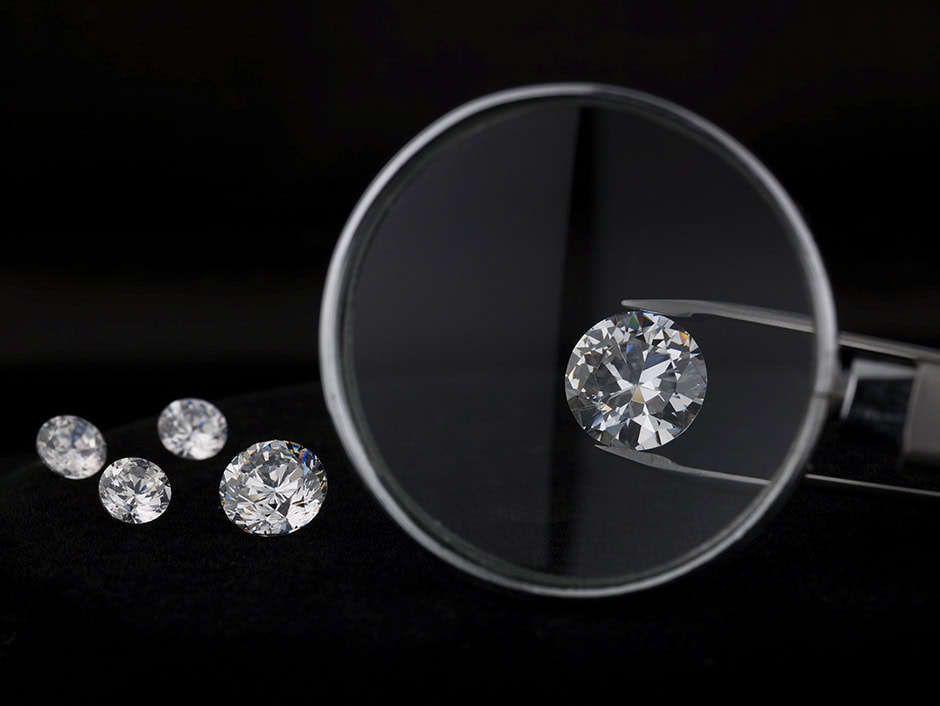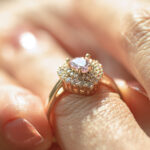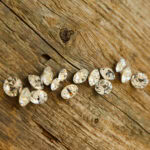Diamonds, Diamonds, Diamonds, and more Diamonds: The 4 Cs Explained
Diamonds, Diamonds, Diamonds, and more Diamonds: The 4 Cs Explained
Diamonds are among the most coveted gemstones in the world, but choosing the perfect one can be daunting. Understanding the 4 Cs—Cut, Clarity, Colour, and Carat—is essential for evaluating a diamond’s quality and value. This guide breaks down each factor, helping you make informed decisions whether buying or appraising.
1. The Diamond’s Cut
The cut of a diamond is one of the most significant factors affecting its overall beauty. It refers not to the shape of the stone (like round, princess, or oval) but to how well the diamond has been crafted and faceted. The quality of the cut impacts how light interacts with the diamond, affecting its brilliance and sparkle.
Key Factors of Cut:
- Proportions: This includes the angles and dimensions of the diamond. Well-proportioned diamonds reflect light beautifully.
- Symmetry: How well the facets are aligned can influence the overall appearance. Better symmetry often leads to enhanced brilliance.
- Finish: This refers to the quality of the polishing. A well-finished diamond will have a smooth surface that maximizes light reflection.
Grading: The cut is graded on a scale from Excellent to Poor. An excellent cut will allow for maximum light return, making the diamond appear more brilliant and fiery.
2. The Diamond’s Clarity
Clarity measures the presence of inclusions (internal flaws) and blemishes (external flaws) within a gemstone. The fewer inclusions and blemishes a diamond has, the higher its clarity grade. These imperfections can affect how light passes through the diamond, impacting its sparkle.
Grading Scale:
- Flawless (FL): No inclusions or blemishes visible under 10x magnification.
- Internally Flawless (IF): No inclusions visible under 10x magnification, only surface blemishes.
- Very Slightly Included (VVS1 and VVS2): Minute inclusions that are difficult to see under 10x magnification.
- Slightly Included (SI1 and SI2): Inclusions that are noticeable under 10x magnification but may be difficult to see with the naked eye.
- Included (I1, I2, and I3): Inclusions that are obvious and may affect transparency and brilliance.
Implications: While higher clarity grades are desirable, many inclusions are microscopic and won’t be visible without magnification. It’s often possible to find beautiful diamonds with slightly lower clarity grades that still look stunning.
3. The Diamond’s Colour
When evaluating diamonds, colour refers to the absence of colour in white diamonds. The less colour a diamond has, the more valuable it is considered. The grading scale for diamond colour ranges from D (colourless) to Z (light yellow or brown).
Key Points:
- Colourless (D-F): These diamonds are rare and highly sought after, with no visible hue.
- Near Colourless (G-J): These diamonds appear colourless to the naked eye but may have slight hints of colour when compared to higher grades.
- Faint Yellow (K-M): These diamonds may show a noticeable tint, and while still beautiful, they are less valuable.
- Light Yellow (N-R): These diamonds have a distinct yellow hue and are less desirable in the market.
Choosing Colour: For those on a budget, choosing a G or H colour diamond can offer excellent value while still appearing colourless in most lighting conditions.
4. The Diamond’s size, or Carat
Carat weight measures the size of the diamond. One carat is equivalent to 200 milligrams. Generally, the larger the diamond, the more valuable it is, but the relationship between carat weight and price isn’t always linear. Factors such as cut, colour, and clarity also play significant roles in determining value.
Key Considerations:
- Visual Impact: A well-cut diamond can appear larger than its actual carat weight, while a poorly cut diamond might look smaller.
- Price Jumps: Diamonds are often priced per carat, with significant jumps in price at certain weights (e.g., 1.00 carat, 1.50 carats).
Finding Balance: Many buyers seek a balance of carat weight with good quality in cut, clarity, and colour. It’s possible to find a diamond that feels larger visually without the higher price tag associated with larger carat weights.
How to Assess Gemstone Quality
When assessing the quality of gemstones beyond diamonds, the principles of the 4 Cs can also apply, though the specifics may vary by type. Here are some general tips for evaluating other gemstones:
- Research: Familiarise yourself with the specific gemstones you’re interested in, as each has its own characteristics and grading standards.
- Professional Appraisal: Consider getting an appraisal from a qualified jeweller or gemologist. They can provide a detailed assessment of your gemstone’s quality based on recognised standards.
- Visual Inspection: Learn to look for flaws or unique characteristics. Some gemstones have specific inclusions that can even enhance their beauty.
- Certification: When purchasing high-value gemstones, seek ones that come with certification from a reputable grading laboratory.
- Trust Your Eyes: Ultimately, the most important factor is how you feel about the gemstone. Trust your instincts and choose what resonates with you personally.
Let Wellington Jewellery Valuations Help
Understanding the 4 Cs of diamonds—Cut, Clarity, Colour, and Carat—can help you to make informed decisions when purchasing or evaluating gemstones. At Wellington Jewellery Valuations, we are dedicated to helping you navigate the world of jewellery with confidence. Whether you’re looking to buy a new piece or appraise an existing one, knowledge is key to ensuring that your choices reflect both quality and your unique style.
If you have any questions about gemstone quality or would like to schedule a consultation, feel free to reach out.






No Comments